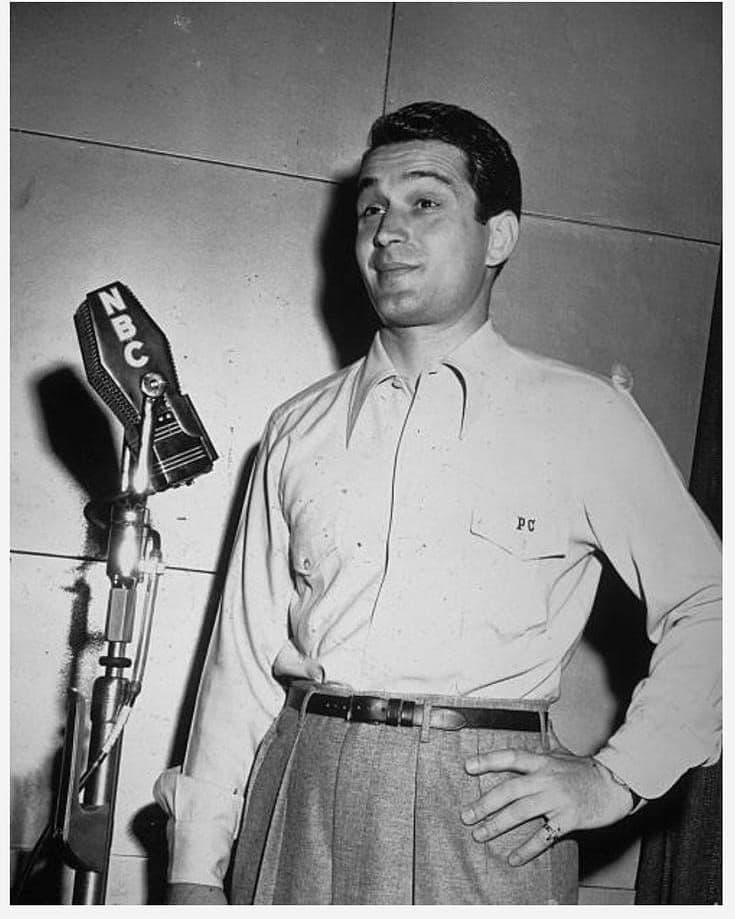
Papa Loves Mambo: A Timeless Ode to Joy and Family
Ah, the 1950s. A time of burgeoning optimism, pastel-colored dreams, and a soundtrack that perfectly captured the era’s lighthearted spirit. And who better to embody that spirit than the incomparable Perry Como, a man whose velvety voice could soothe any troubled soul and bring a smile to even the most stoic face. Tonight, we dust off a particular gem from his illustrious career, a song that, much like a perfectly aged photograph, instantly transports us back to simpler times: “Papa Loves Mambo.”
Released in 1954, at the height of the mambo craze that swept across America, “Papa Loves Mambo” quickly ascended the charts, becoming a significant hit for Como. It peaked at an impressive No. 4 on Billboard’s Top 100 chart, solidifying its place as one of the year’s most popular tunes. But its chart success, while notable, tells only a fraction of the story. This wasn’t just another catchy tune; it was an anthem of domestic bliss, a vibrant snapshot of family life set to an irresistible Latin rhythm.
The story behind “Papa Loves Mambo” is as charming as the song itself. Written by Al Hoffman, Dick Manning, and Bix Reichner, it cleverly tapped into the cultural phenomenon of the mambo. This energetic dance, with its syncopated rhythms and lively steps, had migrated from Cuba and was taking American dance floors by storm. Suddenly, everyone, from teenagers to grandmothers, was trying their hand at the mambo. The songwriters, with their keen ear for popular trends, saw the inherent humor and warmth in depicting a seemingly staid patriarch succumbing to the infectious allure of the dance.
The meaning of “Papa Loves Mambo” is beautifully straightforward, yet profoundly resonant. It celebrates the simple joys of life, the unexpected bursts of passion, and the unifying power of music and dance within a family unit. It paints a picture of a father, perhaps initially reserved or preoccupied with the daily grind, who finds liberation and sheer delight on the dance floor. The lyrics playfully recount how Papa, usually engrossed in his newspaper or routine, becomes a changed man when the mambo music starts. He transforms from a figure of quiet authority into a lively participant, much to the amusement and delight of his family. Mama, who might have been longing for a bit of excitement, clearly appreciates this newfound vivacity in her husband. It’s a gentle reminder that even the most conventional among us harbor a spark of spontaneity, waiting for the right rhythm to ignite it.
For many of us who grew up in that era, or perhaps heard this song echoing from our parents’ record players, “Papa Loves Mambo” evokes a powerful sense of nostalgia. It conjures images of bustling living rooms, family gatherings, and the sheer unadulterated fun of communal music. It reminds us of a time when entertainment was often home-grown, when families gathered around the radio or record player, and shared moments of pure, unscripted joy. Perry Como’s smooth, effortless delivery perfectly complements the song’s lighthearted theme. He doesn’t oversell the humor; instead, his understated charm makes the narrative even more endearing. His voice, warm and inviting, makes you feel as if he’s sharing a personal anecdote, a fond memory of his own family’s playful antics.
Beyond its lyrical content, the musical arrangement of “Papa Loves Mambo” is a masterclass in mid-century pop. The vibrant brass, the insistent percussion, and the catchy melody all contribute to its irresistible charm. It’s a song that demands you tap your feet, perhaps even get up and try a few mambo steps yourself, regardless of your dancing prowess. It’s an auditory embrace, a musical hug that tells us, “It’s okay to let loose, to find joy in the unexpected, and to dance like no one’s watching – especially if Papa’s leading the way.” And in an ever-complex world, sometimes, that simple message is precisely what our hearts long to hear.